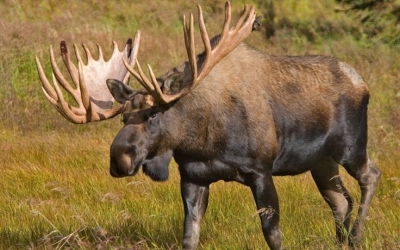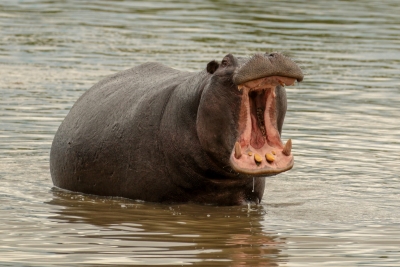
If you like Rudolf the red-nosed reindeer, you may like his bigger cousin – the Alaskan moose. The moose, or elk as it is known in Europe, is the largest member of the deer family. It stands at almost 7 feet tall and weighs close to 650 kg – almost double the size of a reindeer.
Its imposing height is accentuated by enormous, regal antlers that can span 6 feet from tip to tip. Moose shed their antlers in the winter and grow a new pair in the spring. Every year their antlers grow bigger and more impressive. For the male moose, antlers are a sign of dominance and also help protect its eyes during fights or displays.
The moose is a browser that will eat willows, aspen twigs, woody plants and bark from trees and shrubs. In fact, the name moose comes from the Algonquin (indigenous people of Canada) term meaning “eater of twigs”. Did you know that the moose can store more than 45 kgs of food in its stomach? How’s that for food hoarding?
Even though they look enormous and unwieldy, these animals are graceful on land and water. They are capable of running at 56 km/h and can swim at nearly 10 km/h. They need to be nimble on their feet, as moose hunting is a sport in Alaska. Every year nearly 7,000 moose are killed during autumn and winter with guns as well as bows by local residents. They are also hunted by wolves and bears.
Surprisingly however, the moose is listed under ‘Least Concern’ in the IUCN List. In fact, moose populations are actually increasing in many ranges. GO moose!
Picture Credit : Google





